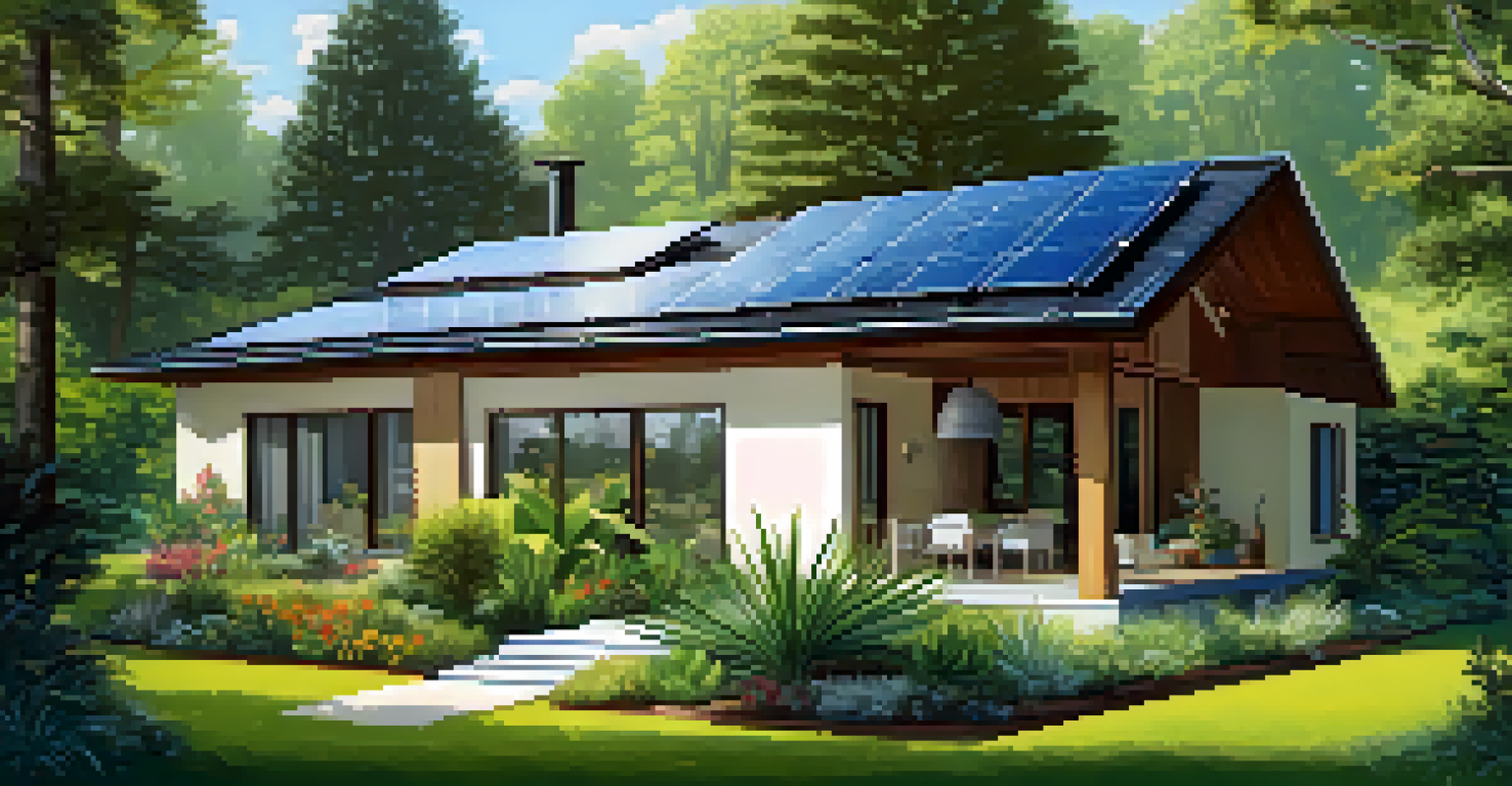Understanding Tax Credits for Energy-Efficient Home Upgrades

What Are Tax Credits for Energy-Efficient Upgrades?
Tax credits for energy-efficient home upgrades are incentives offered by the government to encourage homeowners to make improvements that reduce energy consumption. These credits can directly lower your tax bill, making them a valuable financial benefit. Essentially, when you upgrade your home with energy-efficient systems or materials, you might qualify for a tax reduction based on the expenses incurred.
The best time to plant a tree was twenty years ago. The second best time is now.
For example, if you install solar panels or high-efficiency HVAC systems, you may receive a tax credit that reflects a percentage of your investment. This can significantly offset the upfront costs, making such upgrades more financially accessible. Understanding how these credits work is crucial to maximizing your savings when improving your home’s energy efficiency.
Additionally, tax credits differ based on the type of upgrade and the year in which you make the improvement. Staying informed about these changes can help you plan your upgrades strategically and ensure you take full advantage of available benefits.
Types of Energy-Efficient Upgrades Eligible for Tax Credits
Various upgrades qualify for tax credits, including solar energy systems, geothermal heat pumps, and energy-efficient windows. Each type of upgrade may have specific requirements that must be met to qualify for the credits. For instance, solar panels must be installed on your primary residence and meet certain efficiency standards to qualify for federal tax credits.

High-efficiency heating and cooling systems also fall under these incentives, which can lead to significant savings on both your installation costs and your energy bills. Moreover, upgrading insulation and installing energy-efficient doors and windows can also yield tax benefits, adding to your potential savings. It’s a win-win situation when you consider both the immediate financial relief and long-term energy savings.
Tax Credits Lower Upgrade Costs
Tax credits can significantly reduce your tax bill when you make energy-efficient home upgrades.
To find out the specific upgrades that qualify for tax credits, it's advisable to check the IRS website or consult with a tax professional. This way, you can ensure that your planned renovations align with the current eligibility criteria and maximize your benefits.
How to Claim Tax Credits for Home Upgrades
Claiming tax credits for energy-efficient home upgrades is a straightforward process, but it requires some attention to detail. Typically, you’ll need to fill out IRS Form 5695 when filing your federal tax return. This form allows you to calculate the credits you are eligible for based on the improvements made.
Energy efficiency is not just a technology; it’s a way of life.
It’s important to keep all receipts and documentation related to your upgrades, as you may need to provide proof of purchase and installation. Additionally, some states offer their own tax credits, which may require separate applications or forms. Ensure you understand both federal and state requirements to fully benefit from available credits.
Once your return is filed and the credits are claimed, you can enjoy the rewards of your energy-efficient investments. Not only will you see a reduction in your tax liability, but you’ll also contribute to a more sustainable future.
The Financial Benefits of Energy-Efficient Upgrades
Investing in energy-efficient upgrades can lead to substantial financial benefits beyond just tax credits. For instance, many homeowners notice a significant drop in their monthly utility bills after making these improvements. Energy-efficient systems and appliances consume less energy, meaning you’ll spend less money on heating, cooling, and electricity.
Moreover, energy-efficient homes are often more attractive to buyers, which can increase your home's resale value. In many markets, buyers are willing to pay a premium for homes that have been upgraded with energy-efficient features. This makes your initial investment even more worthwhile, as it not only saves you money but can also yield a higher return when it’s time to sell.
Wide Range of Eligible Upgrades
Upgrades like solar panels, HVAC systems, and energy-efficient windows can qualify for tax credits, enhancing your savings.
In addition to tax credits and lower utility bills, some utility companies also offer rebates for energy-efficient upgrades. Combining these incentives can make it even easier to justify the initial costs of upgrading your home’s systems.
Common Misconceptions About Tax Credits
There are several misconceptions surrounding tax credits for energy-efficient home upgrades that can lead to confusion. One common myth is that tax credits are only available for large-scale projects like solar installations. In reality, even smaller upgrades, such as installing energy-efficient lighting or insulation, can qualify for incentives.
Another misunderstanding is that tax credits are the same as tax deductions. While tax deductions reduce your taxable income, tax credits directly reduce your tax due, making them generally more beneficial. This distinction is crucial when planning your financial strategy for home upgrades.
Lastly, some homeowners believe that once they claim a credit, they can't do so again in the future. However, many tax credits are designed to be claimed year after year for qualifying improvements, allowing you to enjoy ongoing benefits as you continue to enhance your home’s energy efficiency.
Future of Tax Credits for Energy Efficiency
The future of tax credits for energy-efficient home upgrades looks promising, with increasing support for sustainable living. Governments are recognizing the importance of reducing carbon footprints, and as such, are likely to continue offering and even expanding these incentives. Legislative changes may introduce new credits or enhance existing ones, providing even more opportunities for homeowners.
Additionally, public awareness about climate change and energy conservation is growing, pushing for more initiatives aimed at promoting energy efficiency. This means that homeowners can expect a continued focus on making energy-efficient upgrades more accessible through financial incentives.
Claiming Credits is Simple
Filing IRS Form 5695 and keeping proper documentation allows you to easily claim tax credits for your energy-efficient investments.
As a homeowner, staying informed about upcoming policies and potential changes to tax credits can help you plan your upgrades strategically. Keeping an eye on these developments allows you to take advantage of every opportunity for savings in the future.
Conclusion: Maximizing Your Benefits from Tax Credits
In summary, understanding and utilizing tax credits for energy-efficient home upgrades can lead to significant savings and improve your home's sustainability. By staying informed about eligible upgrades and the claims process, you can maximize the financial benefits available to you. It’s all about making smart choices that not only enhance your living space but also contribute to a greener planet.
As you embark on your journey of home improvements, remember that every upgrade counts. Whether it’s big or small, each step toward energy efficiency can lead to savings on your taxes and utility bills. Plus, you’ll be doing your part in promoting environmental responsibility.

So, as you consider your next home improvement project, take the time to explore the tax credits available. With a little research and planning, you can enjoy a more comfortable home and reap the financial rewards of energy efficiency.